In the realm of espresso, understanding the nuances between different extractions can elevate one’s appreciation for this beloved beverage. The comparison of Ristretto vs Long Shot is not merely a topic for coffee aficionados; it’s a journey into the heart of espresso-making, spotlighting the varied techniques and results of two prominent brewing methods. As we delve deeper into the intricacies of both, we’ll uncover the unique flavors, strengths, and characteristics that define each. Join us as we examine and celebrate the rich tapestry of espresso extractions.
Don’t feel like scanning text? Click below for the article’s audio version.
- Introduction & Key Takeaway
- https://app.mysoundwise.com/tracks/16979260409835156e.mp3
- Understanding the Basics
- https://app.mysoundwise.com/tracks/16979276448030972e.mp3
- Ristretto vs Long Shot: The Brewing Process
- https://app.mysoundwise.com/tracks/16979276646747002e.mp3
- Long Shot vs Ristretto: The Taste Profile
- https://app.mysoundwise.com/tracks/16979276998451145e.mp3
- Popular Variations and Combinations
- https://app.mysoundwise.com/tracks/16979277310227329e.mp3
- Expert Recommendations and Tips
- https://app.mysoundwise.com/tracks/16979277598908970e.mp3
- Conclusion & FAQs
- https://app.mysoundwise.com/tracks/16979277841795295e.mp3
Long Shot vs Ristretto: Key Takeaway
- Variety in Extraction: The article highlights the distinct differences between ristretto and long-shot extractions, emphasizing that both methods offer unique taste profiles and strengths.
- Depth of Flavor: Ristretto and long shot extractions capture varying flavor notes from the coffee beans, with ristretto leaning towards brighter, acidic notes and long shots offering a broader spectrum of flavors.
- Expert Insights: Recommendations on the best beans for each extraction method and tips from barista champions offer readers actionable insights for their own brewing journey.
- Maintenance Matters: The article underscores the importance of machine maintenance in achieving optimal espresso extractions, emphasizing regular upkeep for the best coffee experience.
- Global Perspective: By exploring international takes on ristretto and long shot, the article offers a broader understanding of how different cultures approach and appreciate these espresso extractions.
Understanding the Basics
When diving into the world of espresso, the nuanced differences between various shots can be both intriguing and overwhelming. Among the plethora of options, understanding the key differences between ristretto coffee and long shot coffee becomes vital. These differences not only impact the taste and texture of the coffee but also the overall experience. Additionally, how one equips themselves in terms of brewing gear plays a pivotal role in the results. Let’s break down the basics to get a clearer understanding.
What is a Ristretto Shot?
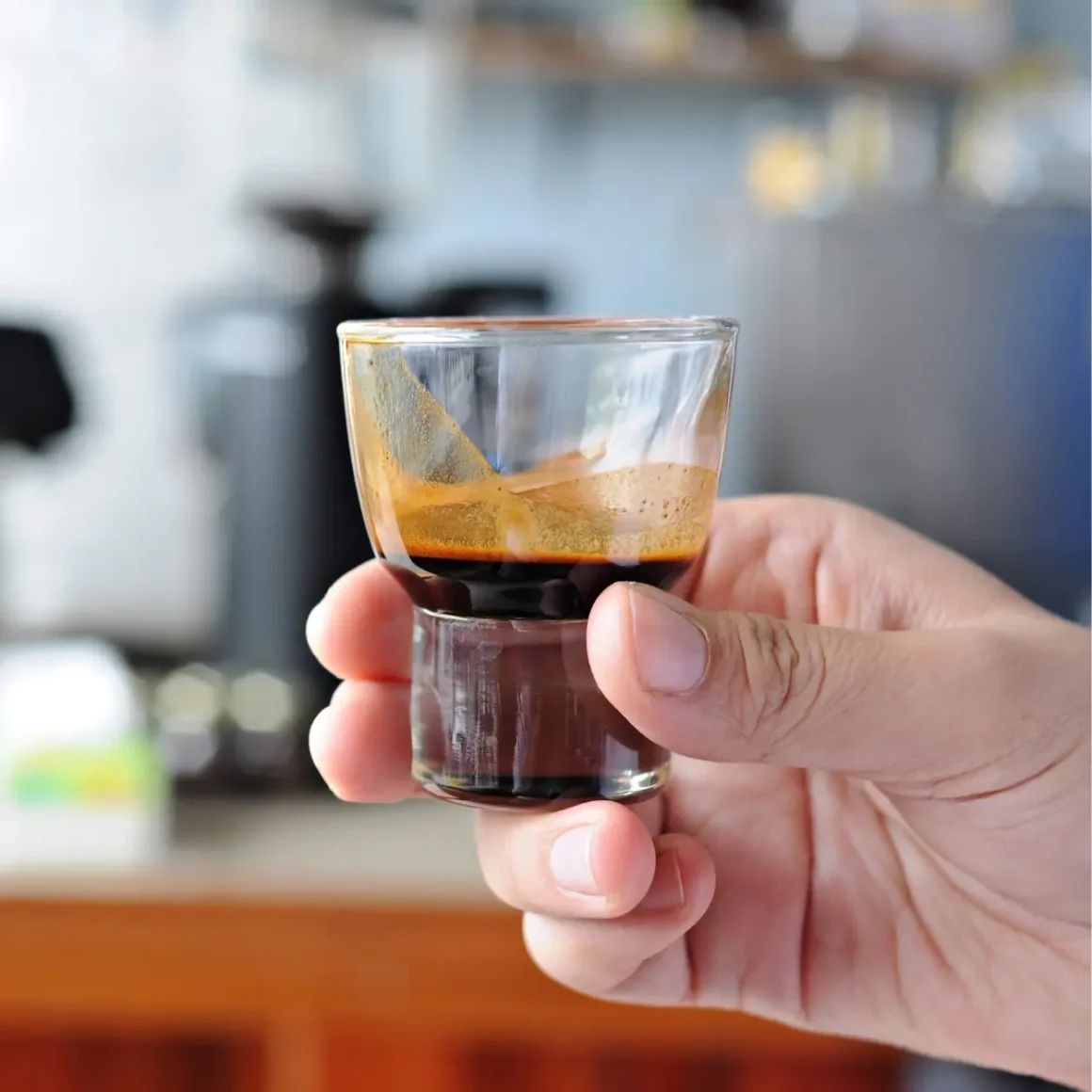
Ristretto coffee is often considered the intense sibling in the espresso family. Originating from the Italian word for “restricted,” a ristretto shot is characterized by:
- Brewing Technique: Uses half the amount of water as a standard espresso shot.
- Taste Profile: Offers a concentrated flavor, which tends to be more robust and less bitter than traditional espresso shots.
- Extraction: Because of the reduced water, the extraction process is faster, often highlighting the coffee’s inherent sweetness and downplaying its acidity. (1)
What is Long Shot?
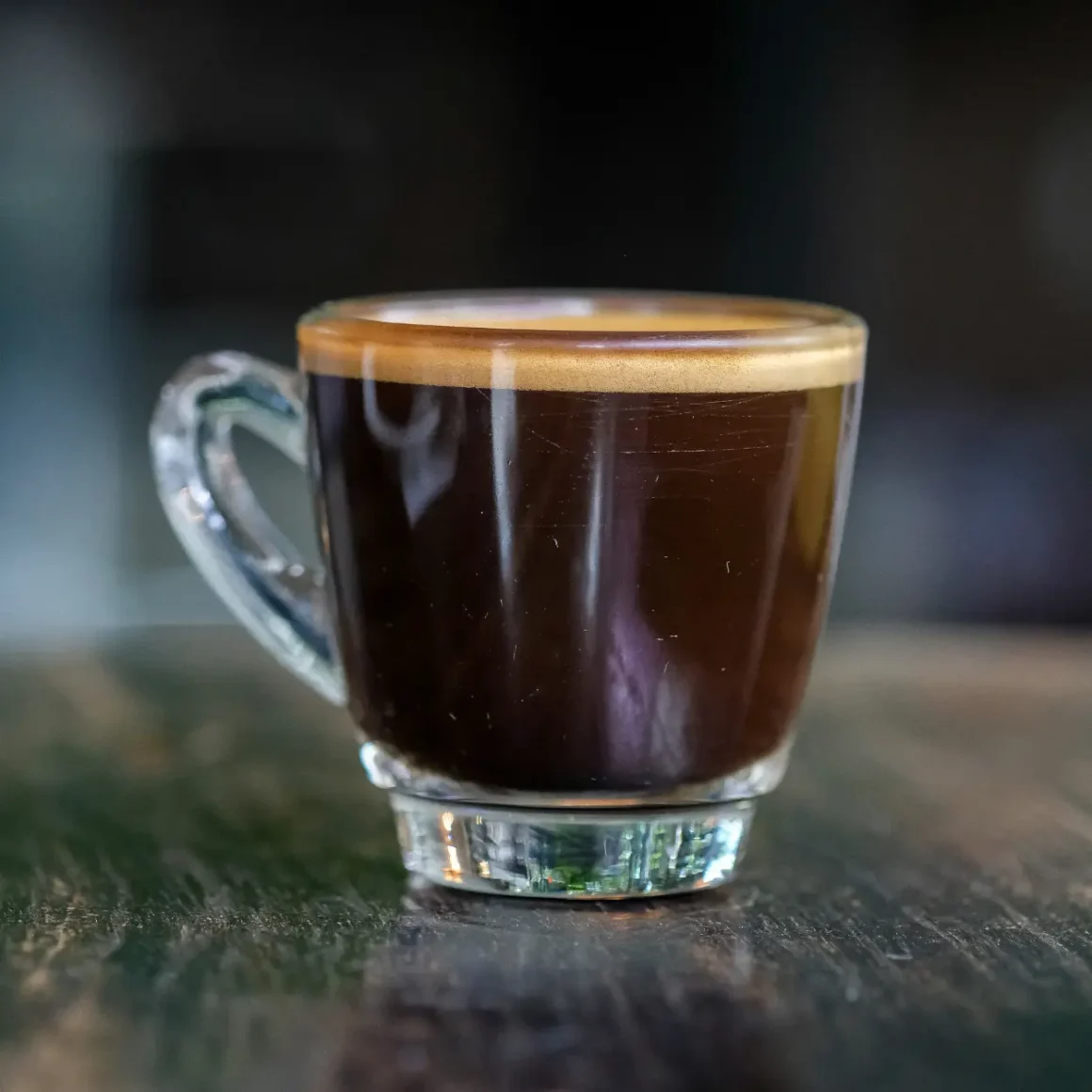
In the debate of long shot vs ristretto, the long shot emerges as the gentler, more extended version of an espresso shot. Here’s what defines this delectable coffee:
- Brewing Technique: As opposed to ristretto, a long shot, often termed lungo coffee, uses more water than a standard espresso shot. (2)
- Taste Profile: This results in a milder, more diluted flavor compared to its counterparts.
- Extraction: The extended extraction process can bring forth different, often subtler, flavor notes from the coffee beans.
The Brewing Equipment: Machines and Grinders
Achieving the perfect taste in coffee, whether for a ristretto or a coffee lungo, hinges on the right equipment.
- Espresso Machine: Beyond simply boiling water, a reliable espresso machine ensures consistent temperature and pressure—key for perfect extraction. Plus, many modern machines have settings to adjust the water volume, catering to both ristretto and long shot preferences with ease.
- Coffee Grinder: Essential to a great coffee shot, the grinder determines grind consistency. Burr grinders, known for their uniformity, are preferred. The grind size is usually fine for espresso, but adjustments might be necessary based on bean type and desired shot.
- Fresh Coffee Beans: Freshness is paramount. Fresh beans deliver vibrant flavors and aromas. Bean type and roast level significantly influence the final brew, with some beans better suited for specific shots than others.
- Tamper: This simple tool, often overlooked, ensures ground coffee is compacted evenly in the portafilter, promoting consistent water flow during extraction. Proper tamping is crucial; otherwise, even premium beans and machines might disappoint.
- Water Filter: Especially when using tap water, a filter is key. Since coffee is mostly water, any impurities can distort taste. A quality water filter guarantees purity and consistent flavor in each brew.
Overall, understanding the intricacies of long shot and ristretto coffee, and investing in the right equipment, can significantly enhance your coffee brewing and tasting experience.
Ristretto vs Long Shot: The Brewing Process
The world of espresso coffee brings with it a myriad of nuances that can subtly or dramatically influence the taste, aroma, and texture of the coffee. When we talk about ristretto and coffee lungo, we’re essentially diving into the contrasts of coffee extraction. Understanding the differences between “what is a ristretto shot?” and “what is a long shot coffee?” can enhance your appreciation and mastery of this beloved beverage.
The Grind: Size and Consistency
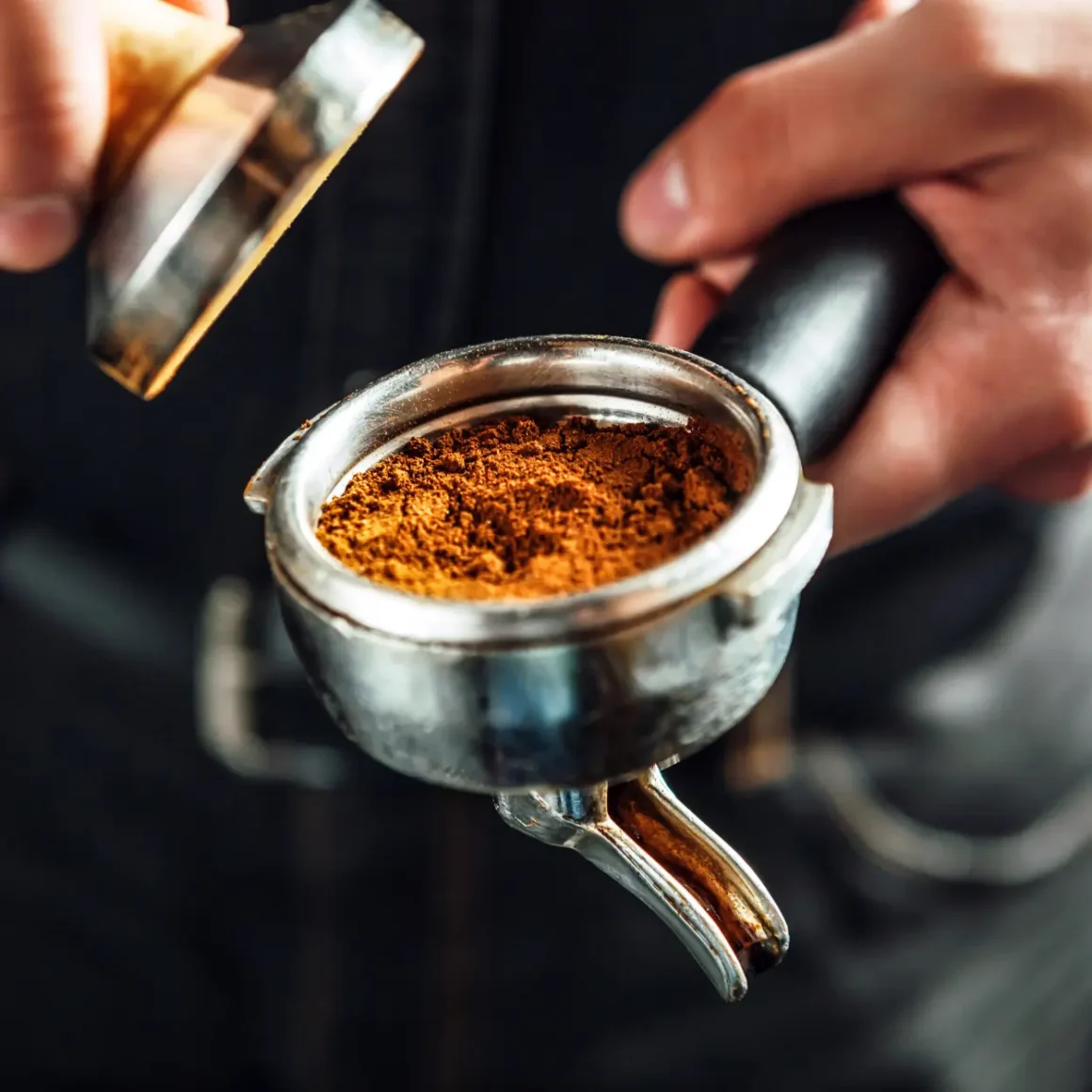
Grinding coffee is not just about pulverizing beans; it’s about setting the stage for optimal extraction.
- Size Matters: A ristretto shot typically requires a finer grind compared to a long shot. The fine particles ensure quick and intense extraction, which is ideal for the short burst of water used in a ristretto.
- Consistency: Uniformity in grind size is essential for both ristrettos and long shots. While the grind size may differ between the two, ensuring that all particles are of the same size is vital to prevent mixed flavors of over and under-extraction.
The Extraction Time: Quick vs Extended
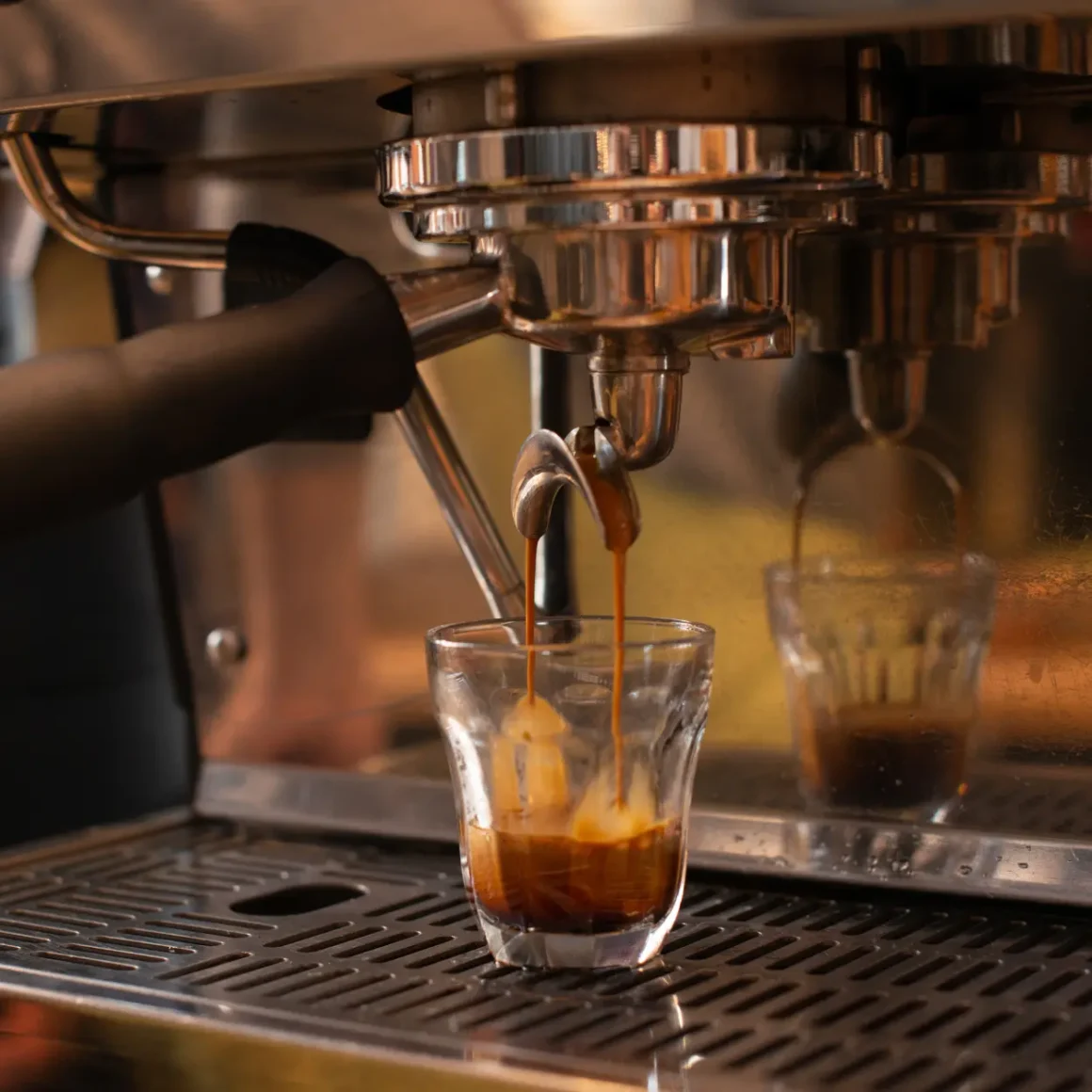
While both ristretto and lungo coffee fall under the espresso category, their extraction times differ significantly, influencing their flavor profiles.
- Quick Extraction: The ristretto shot, as the name suggests, is “restricted.” It involves a quick extraction time of about 15-20 seconds, using less water. This results in a concentrated, bold, and often sweeter espresso shot.
- Extended Extraction: On the other hand, a long shot involves a more prolonged extraction time, usually around 25-30 seconds. This extended contact with water allows for a broader range of flavors to be drawn out, leading to a milder, more diluted shot compared to the ristretto.
The Ratio of Coffee to Water
This ratio fundamentally defines the strength and character of the shot. It’s a delicate balance that can make or break the final outcome.
- Ristretto: Given its quick extraction time, a ristretto uses a higher coffee-to-water ratio, emphasizing the boldness and intensity of flavors in a smaller volume. This dense shot is a burst of potent flavors in a small package.
- Long Shot: With a more extended extraction, the lungo coffee has a slightly lower coffee-to-water ratio. This means the flavors are spread out, resulting in a less concentrated but more voluminous shot. It offers a gentler coffee experience, embracing both strength and volume.
To sum up, the choice between ristretto and long shot boils down to personal preference. By understanding the nuances in grind, extraction time, and coffee-to-water ratio, one can tailor their espresso experience to their unique palate and preference.
Long shot vs Ristretto: The Taste Profile
Coffee aficionados often debate the merits of different espresso drinks, especially when it comes to the nuanced world of ristretto and long shots. These distinct brewing methods offer unique taste profiles, making each sip a journey through the complexities of coffee. Understanding the differences in strength, flavor, and crema between ristretto coffee and its lungo counterpart can help coffee enthusiasts choose the brew that best suits their palate.
The Strength: Boldness and Intensity
In the vast world of espresso brewing, strength often becomes a subjective matter. How one perceives strength might differ from another, but certain brewing styles do set a distinct benchmark. Let’s explore these benchmarks.
- Ristretto Coffee: Coffee connoisseurs often chase the exhilarating experience of a robust shot. Enter ristretto: The “restricted” shot is known for its robust character. Brewed with a shorter extraction time and less water, ristretto coffee emphasizes the coffee’s inherent strengths. The result? A punchy, bold espresso that captures the essence of the bean in a concentrated manner. It’s the very epitome of intensity in a small package.
- Lungo Coffee: Often referred to as a “long shot,” lungo coffee offers a milder experience. Using more water and allowing a longer extraction time, the lungo method dilutes the coffee’s intensity. But this doesn’t mean it’s lacking in character. Instead, it provides a broader spectrum of the bean’s notes, resulting in a softer but more expansive taste.
The Flavor: Nuances and Balance
Flavor is where the soul of the coffee bean shines through. It’s a culmination of its origin, roast, and the brewing method employed. As we dissect the flavor profile of ristretto and lungo, let’s appreciate the symphony each brings to the table.
- Ristretto Coffee: The world of espresso is rich and diverse, and in its heart lies the ristretto. Its concentrated nature means the ristretto leans towards the front end of the coffee’s flavor profile. Expect brighter, acidic notes, often accompanied by a hint of sweetness. This short extraction prevents the bitter compounds from dominating, ensuring a harmonious balance.
- Lungo Coffee: The extended extraction time of a lungo coffee allows more flavors to unfold. While it captures the initial acidic notes, it also delves deeper into the bean’s complexities, extracting some of the bitter compounds that add depth to the brew. It’s a journey of tastes, from the initial brightness to a more profound, lingering finish.
The Crema: Quality and Thickness
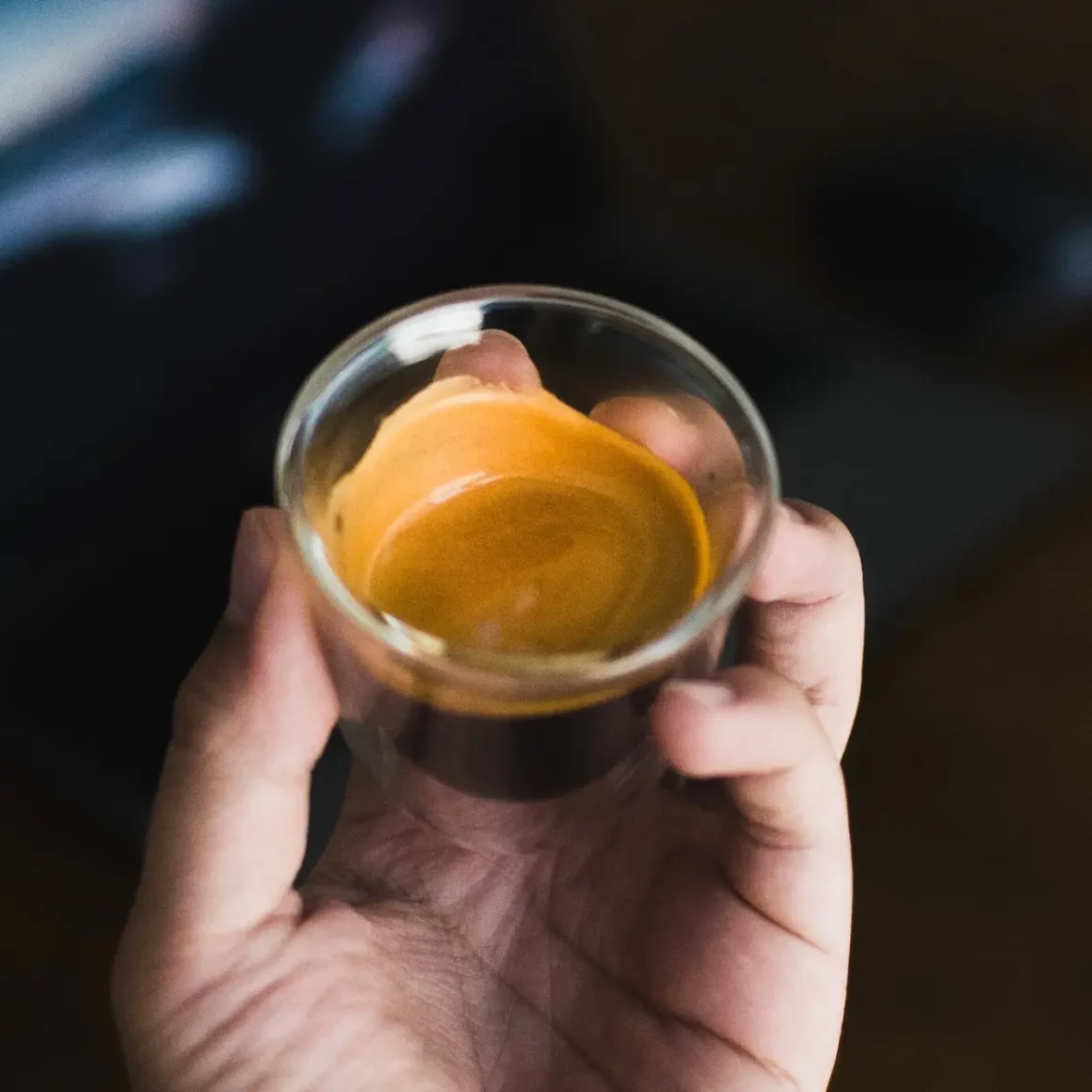
A visual treat and a textural delight, the crema is to espresso what a crown is to a monarch. It’s an indicator, a flavor enhancer, and a subject of admiration. With this prelude, let’s delve into how ristretto and lungo influence the crema.
- Ristretto Coffee: In the symphony of espresso shots, the crema often plays the lead. Due to its rapid extraction and concentrated nature, ristretto coffee often produces a rich and thick crema. This golden layer on top is not just visually appealing; it’s also a reservoir of flavors and aromas, encapsulating the coffee’s vibrant character.
- Lungo Coffee: With its longer extraction, lungo coffee tends to have a thinner crema. While it might lack the density of a ristretto’s crema, it still offers a delightful layer of frothy goodness that carries the bean’s nuanced aromatics.
Popular Variations and Combinations
The realm of coffee is vast, rich, and ever-evolving. New methods and styles come up regularly, but some variations and combinations stand out due to their distinct flavors and historical backgrounds. Here, we’ll delve into some of these popular mixtures that have made a mark on coffee aficionados across the globe.
Mixing with Milk: Latte, Flat White, and Cappuccino

Milk, when added to coffee, transforms its character entirely. The richness, creaminess, and subtle sweetness of milk complement the robust nature of coffee, leading to beverages that are both soothing and invigorating. Here’s how:
- Latte: Originating from the Italian ‘caffè latte’, which simply means ‘milk coffee’, a latte consists of one or two espresso shots topped with steamed milk. The result is a creamy, rich drink with just a hint of coffee robustness. It’s often served in larger volumes and is a go-to for many in the mornings.
- Flat White: An innovation from Down Under, the flat white finds its roots in Australia and New Zealand. Characterized by its velvety microfoam, a flat white uses a double shot of espresso combined with steamed milk. The key is in the milk’s consistency, which is smoother than that in a latte or cappuccino, giving the drink its ‘flat’ nature. (3)
- Cappuccino: A classic Italian favorite, the cappuccino is a harmonious blend of equal parts espresso, steamed milk, and frothed milk. The frothy top layer, often sprinkled with cocoa or cinnamon, offers a delightful textural contrast, making every sip a treat.
Specialty Drinks: Cortado, Americano, and Mocha
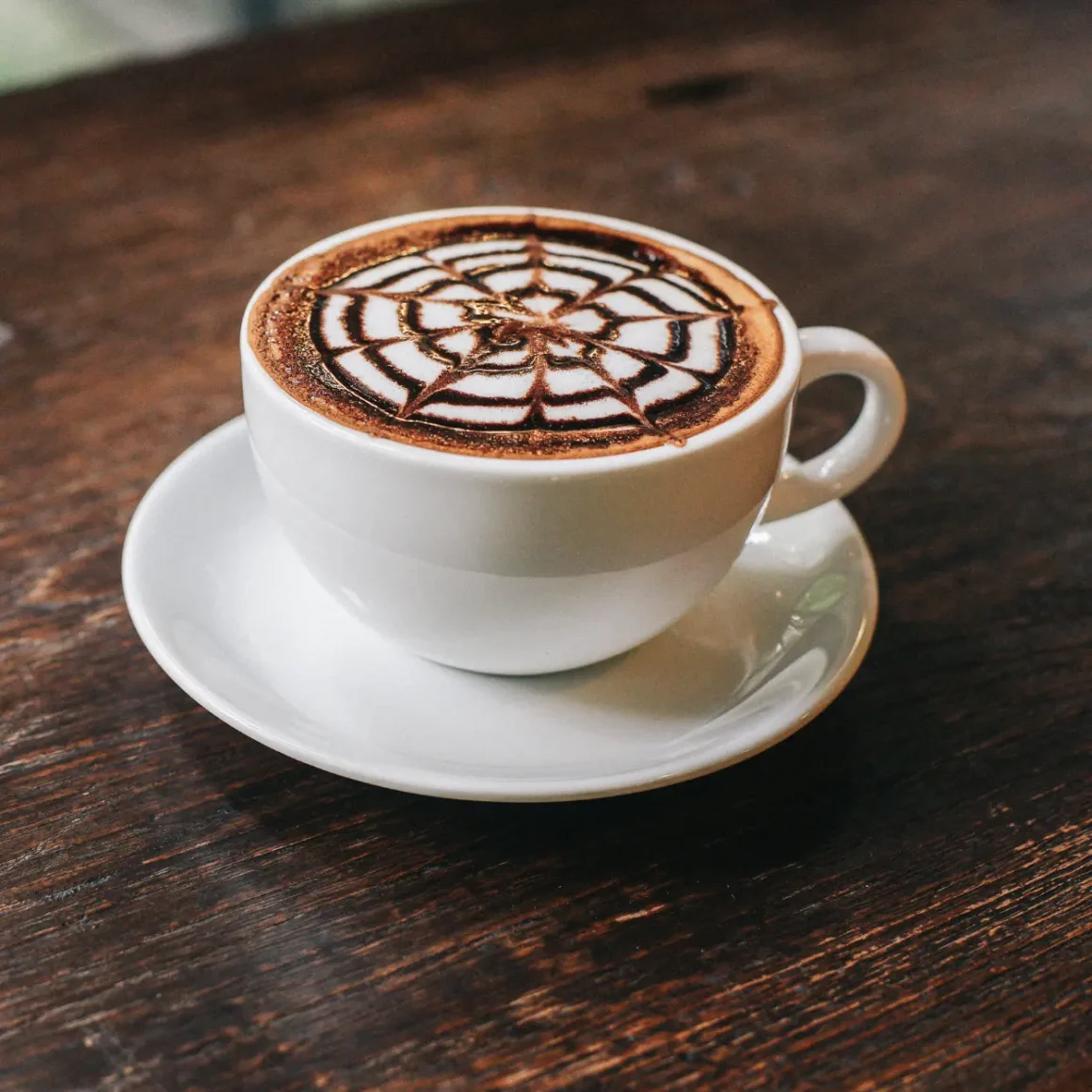
Stepping away from milk-dominant coffees, there’s a world of specialty drinks that offer unique taste experiences.
- Cortado Coffee: A Spanish gem, the cortado is essentially an espresso “cut” with a small amount of warm milk to reduce its acidity. It’s a no-fuss drink that retains the espresso’s potency while mellowing its edge.
- Americano: For those who find a straight espresso too intense, the Americano offers respite. It’s simply an espresso shot diluted with hot water, leading to a coffee that’s similar in strength to regular black coffee but with the nuanced flavors of espresso.
- Mocha: A treat for those with a sweet tooth, mocha is the delightful union of espresso, steamed milk, and chocolate syrup. Often topped with whipped cream, it’s a dessert-like drink that appeals to both coffee and chocolate lovers.
International Takes on Ristretto and Long Shot
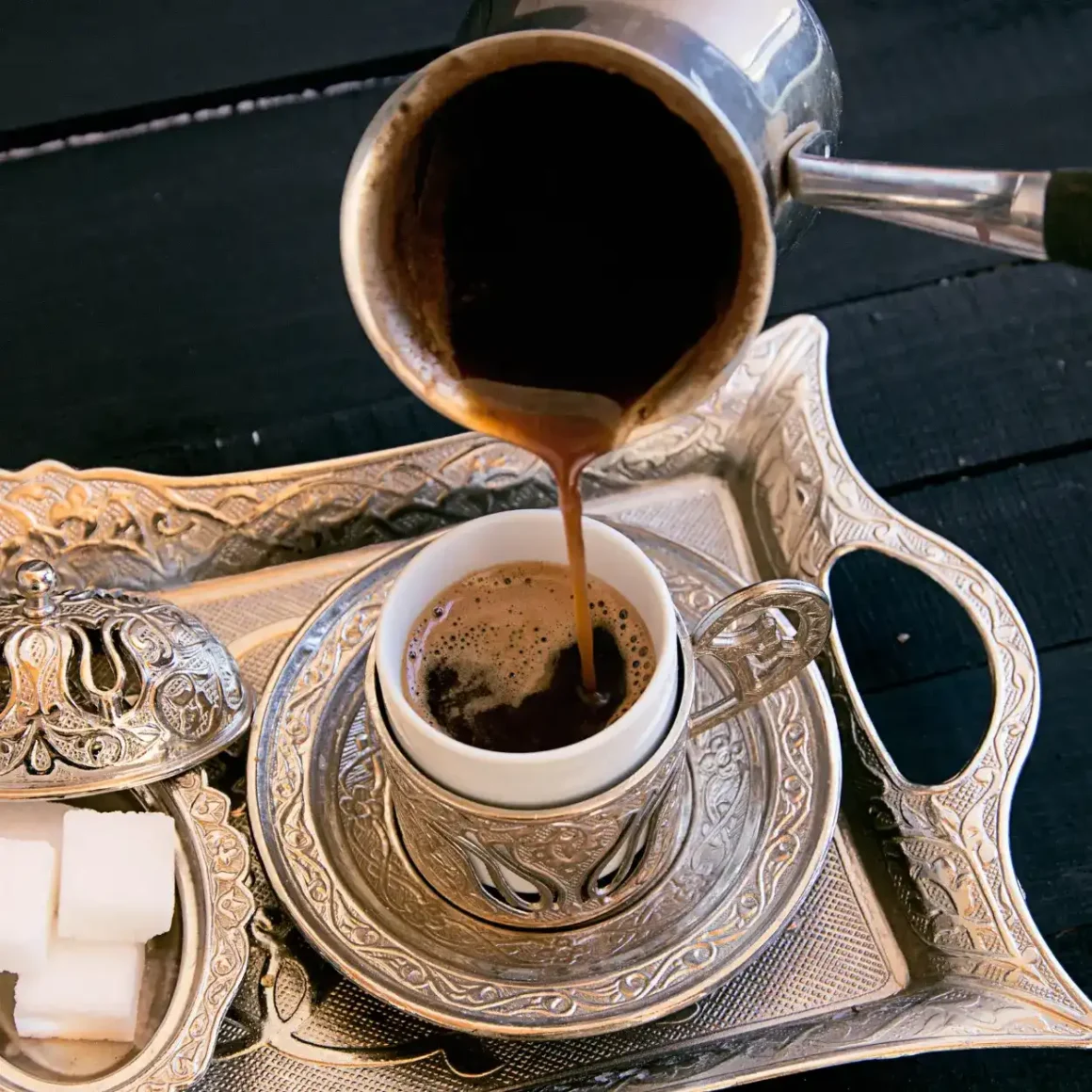
Different cultures have their interpretations and twists on coffee brewing. Ristretto and long shots, despite their Italian origins, have been embraced and adapted worldwide.
- Sweden’s Kaffe: While not a ristretto or long shot in the strictest sense, Sweden’s kaffe is a strong brew, often enjoyed black. When mixed with milk, it aligns more with the potency of a ristretto.
- Turkey’s Turkish Coffee (Türk Kahvesi): This method produces a coffee that’s rich and unfiltered. The fine grind and unique brewing process result in a drink that has similarities to the intensity of a ristretto, but with its distinct character.
- Vietnam’s Cà Phê Đá: Typically made with robusta coffee beans, this iced coffee can sometimes mirror the intensity of a long shot, especially when the drip brewing method is employed. The addition of sweetened condensed milk sets it apart, offering a unique flavor profile.
Expert Recommendations and Tips
When you step into the coffee world, guidance from experts can provide you with insights that transform your brewing experience. Knowing the nuances between espresso vs lungo or understanding which beans qualify as the best coffee can make all the difference in your cup. Here, we share some expert recommendations and tips from renowned coffee connoisseurs.
Best Beans for Ristretto and Long Shot
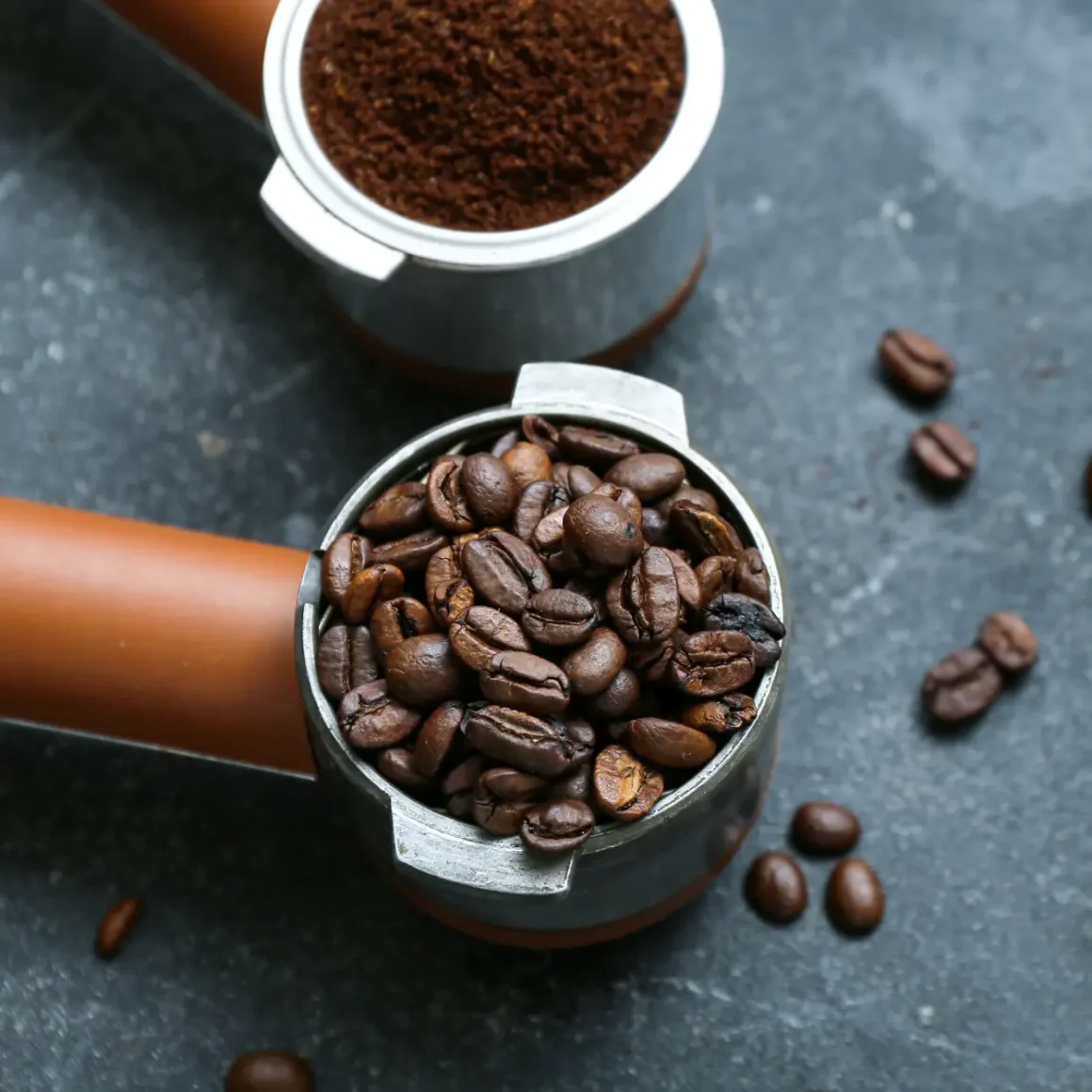
The choice of beans plays a significant role in defining the taste and texture of your brew. Different beans exhibit diverse flavor profiles, and not all beans suit every brewing method:
- Single Origin Beans: Highly recommended by experts for ristretto. These beans hail from a single location, often a specific farm or region. They offer distinct and pronounced flavors, which shine brilliantly when brewed as ristretto, given the method’s concentrated nature.
- Blended Beans: These combine beans from various origins. Blends are crafted to provide a balanced flavor, making them suitable for long shots where extended extraction can reveal a broader spectrum of tastes.
- Dark Roasts: Though a matter of personal preference, dark roasts are often favored for both ristretto and long shots. They offer a deep, bold flavor, which stands out distinctly, especially in a concentrated ristretto.
Brewing Techniques from Barista Champions
Achieving coffee perfection requires precision, and who better to learn from than barista champions? Their tried-and-tested techniques can enhance your coffee game:
- Pre-infusion: This involves wetting the coffee grounds slightly before the actual extraction begins. It allows the coffee to bloom, ensuring even saturation and a more uniform extraction.
- Temperature Consistency: Champions emphasize the importance of maintaining a consistent water temperature throughout the brewing process. A slight fluctuation can alter the extraction rate, affecting the taste.
- Grinding Just Before Brewing: The freshness of the coffee grounds can dramatically impact the flavor. Experts recommend grinding beans just before brewing to capture their full essence.
Maintenance: Keeping Your Machine Optimal
A well-maintained machine is pivotal to achieving consistent and flavorful results:
- Regular Cleaning: Over time, coffee residues can build up in the machine, altering the taste of your brews. Regular cleaning ensures that every cup tastes as good as the first.
- Descaling: Minerals from water can accumulate and clog the machine’s components. Descaling at regular intervals prevents this buildup and keeps your machine running smoothly.
- Checking Seals and Gaskets: These components ensure that the machine is airtight and works at optimal pressure. Periodically inspecting and replacing worn-out seals can prevent leaks and maintain the machine’s efficiency.
Conclusion
In the vast world of coffee, the distinction between long shot vs ristretto exemplifies the depth and diversity that exists within espresso extractions. Both methods offer unique experiences, capturing the essence of coffee beans in different yet equally mesmerizing ways. Whether you’re a seasoned barista or a curious coffee lover, embracing the differences and experimenting with both styles can lead to a more enriched coffee journey. As we conclude, it’s evident that the beauty of espresso lies not just in the brew itself, but also in the myriad ways it can be crafted and appreciated.
Other Popular Coffee Drink Comparisons
- Cafe Con Leche vs Latte: A Comprehensive Guide
- Wet vs Dry Cappuccino: Spotting the Differences in Foam and Milk
- Caffe Misto vs Latte: A Detailed Comparison
- Arabic Coffee vs Turkish Coffee: A Flavorful Battle of Traditions
- Cortado vs Cappuccino: Understanding the Differences and Nuances
FAQ
How does the grind size affect the taste of a long shot?
A finer grind increases extraction, yielding a stronger flavor, while a coarser grind results in a milder taste for a long shot.
What's the caffeine content in ristretto vs long shot?
Ristretto has a slightly higher concentration of caffeine per ounce, but long shots often have more total caffeine due to the larger volume.
Which countries favor ristretto over long shot and why?
Italy and parts of Southern Europe prefer ristretto for its bold, concentrated flavor, aligning with their traditional coffee palate.
What are the health benefits and concerns associated with drinking ristretto and long shot?
Both provide antioxidants and can boost metabolism, but excessive consumption can lead to caffeine-related issues like insomnia or increased heart rate.















